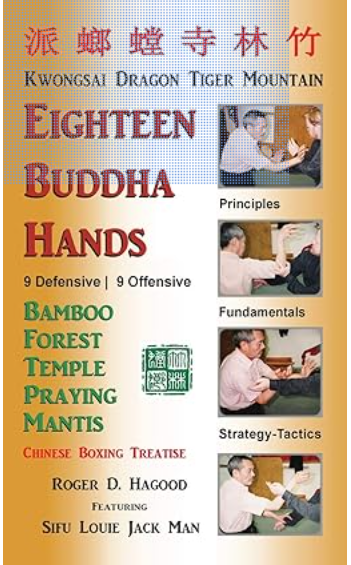
Eighteen Buddha Hands
February 10, 2024
 I’m reading
Eighteen Buddha Hands
by Roger D. Hapgood, a book on Southern Preying Mantis Kung Fu.
I’m reading
Eighteen Buddha Hands
by Roger D. Hapgood, a book on Southern Preying Mantis Kung Fu.
“Any and each of the 18 Buddha Hands, offensive or defensive, may be used as a bridge and their turning power then used for immediate striking. If there exists a bridge then cross the bridge. If no bridge exists then make a bridge. If under the bridge then return to the top. If in top of the bridge then stay on top and immediately cross to the opponent.”
This should sound very familiar to Wing Chun practitioners!
Earlier he writes, “Southern Mantis is connected by similarity with Fukien Crane, Wing Chun, Dragon, and White Eyebrow (as well as Okinawan Karate). The technique is based on a deep rooted firm upright stance, straight explosive force (of a sticky nature) and use of turning and borrowing power with small deflective angles, circles and hooks.”
I studied Wing Chun from 1999 to 2018. Recently I have been studying Tai Chi as well as elements of Bagua and Xing Yi and various Nei Gung practices. There are similarities throughout.
One of I Liq Chuan Grandmaster Sam Chin’s associates (Master Jiru) came to our school and taught us some meditation practices as well as a form (see below), which was described as one of the original Nei Gung forms. Note how many movements are found in Wing Chun. Wing Chun definitely had way more Nei Gung in it back in the day and even now there are many echoes. Raise the head as if it were a balloon on a string. Build the “waist.” Move from the waist. Strike with the whole body.